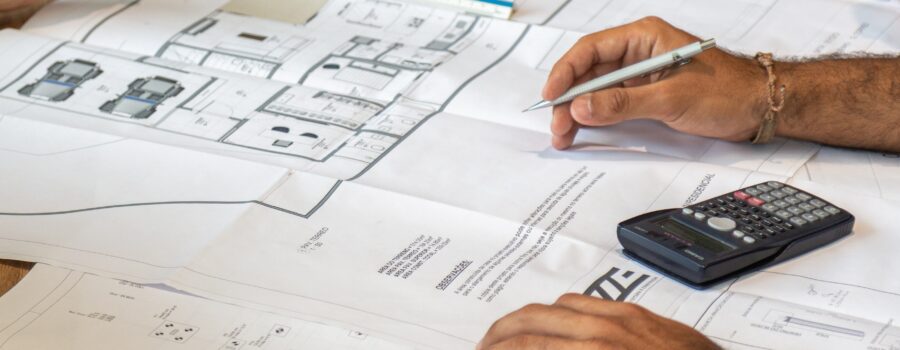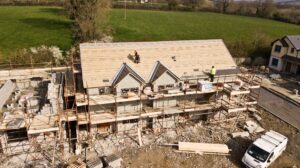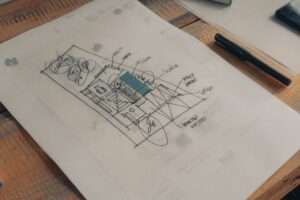
Unveiling the Cost of Retroactive Permits: A Comprehensive Guide
When you’re planning to build a house or remodel a kitchen, you’ll need to apply for a building permit from the city. In California, building permits are required for most renovation projects. The purpose of a building permit is to ensure that construction and renovation projects adhere to local zoning regulations and code requirements. Following these regulations reduces the likelihood of safety hazards.
Building permits are also crucial for renovation projects because of the consequences of not using them. For example, let’s say you perform a significant bathroom remodel without the work permitted. If you decide to sell your home a few years later, you’ll likely need help to complete the transaction. Lenders usually don’t approve loans for borrowers who want to buy homes with unpermitted work.
If your property contains unpermitted work, you can correct this issue by obtaining a retroactive permit, which is available in many cities. While this type of permit can be expensive, it allows you to proceed with selling your home. This guide answers the question, “How much does a retroactive permit cost?” while also detailing what to expect from the application process.

Understanding Retroactive Permits
If you’ve started on a renovation project and recently discovered that you don’t have the necessary building permit, you can apply for a retroactive one. If you obtain a retroactive license during or after construction, you can finish your project without tearing down the whole structure.
Gaining approval for a retroactive permit is easiest in California if the work you’ve already done meets local building codes and guidelines. All you’ll need to do is adhere to standard permit requirements. On the other hand, the retroactive permit process can take longer and cost more money if your work doesn’t meet local building codes.
When you apply for this type of permit, ensure you provide the latest blueprints for your project. While some smaller projects don’t require a license, most renovations do. If the project changes your home’s footprint, you must obtain a permit.
Factors Influencing Retroactive Permit Costs
Numerous factors influence the costs of obtaining a retroactive permit, which include the following:
- Project size
- Nature of project
- Extent of work
- Project location
Many cities have processes in place that support retroactive permits, which can be helpful when you’re trying to keep costs down. The city may ask you to open specific areas of the building to display the work that’s been done. If your city still needs retroactive permitting guidelines, you’ll need to meet with planning officials to ensure you can effectively permit the construction work you’ve already done.
The main factor determining the cost of a retroactive permit is the total value of the construction. If the work is already up to code, you may be able to limit your expenses. However, bringing older construction up to code can be costly.
Average Cost of Retroactive Permits
Obtaining a retroactive building permit involves everything from meeting with your local planning department to hiring an architect who can create project plans and blueprints. You’ll also need to schedule inspections. Each stage of the process costs money. Obtaining a retroactive permit for a large project will usually cost more than getting one for a minor renovation.
The cost of scheduling a meeting with city planning officials depends on the location of your property. Architects often charge around 5%-20% of total project costs to create building plans and blueprints for renovations. However, only some projects require an architect. The application fee can be a couple hundred dollars.
To obtain a retroactive permit in California, you can expect to pay around $500-$2,000, depending on the aforementioned factors. Permit fees depend on total construction costs and the project area’s square footage.

Breaking Down Permit Costs for Different Projects
Permit costs differ based on the specific type of project you’re planning to work on.
Building a House
Building a new home is a significant project, so permit costs are often higher than with more minor renovations—the permitting costs for building a house range from $600 to $3,000. However, the average cost is closer to $1,500.
Garage Conversion
The permit fee for a garage conversion is around $700-$1,500. Remember that you’ll likely need to obtain electrical, plumbing, and HVAC permits for this project, so your fees will be higher. If only a tiny amount of work needs to be done to complete the conversion, you could pay as little as $100-$500.
Electrical Work
Electrical permits often cost $50-$500. If your project involves installing new outlets or rewiring a room, you must apply for a license.
Plumbing
Plumbing permits also range from $50 to $500. Whether installing new fixtures or replacing an entire water heater, you must obtain this permit before work begins.
Shed Installation
If you install a smaller shed of less than 120 square feet, you can finish the project without obtaining a permit. However, most shed installations require permits that cost around $50-$250. If you’re building a shed you intend to use as a living space, your permit costs could be as high as $2,000.
Fence Installation
A permit is required to install a fence, and it costs around $25-$200. However, in some areas, permits aren’t required if the fence is less than six feet tall.
Deck Installation
When building a deck, your permit costs range from $50 to $600. Costs are higher if you’re constructing a covered patio. In some cases, a permit is optional. For example, a detached deck under 200 square feet in size may not require a license.
Pergola Installation
Obtaining a pergola permit will cost you between $50-$150. If you intend to add light fixtures to the design, you might be tasked with applying for an electrical permit.
Kitchen Remodel
A permit for a kitchen remodel will cost between $500 and $1,500. Multiple factors determine the cost, including the value of the project and the total size of the kitchen. A permit is necessary to change the kitchen’s layout or perform demolition work.
Bathroom Remodel
Getting a bathroom remodel permit can cost between $200 and $1,000. However, if the project is smaller and only involves replacing a fixture, you might not need a license.
Roof Replacement
To replace a roof, you’ll likely pay around $400-$1,500 in permit costs. Your contractor may fold these costs into your roof replacement bill.
Home Additions
If you plan on making one or more room additions to your home, you can expect to pay around $0.15-$0.75 per square foot in permit costs. A home addition can be anything from an attic to a guest bedroom.
Special Considerations
Being approved for a retroactive permit is often more challenging than obtaining a standard one. The main difficulty you must navigate is ensuring your unpermitted work adheres to local building codes. To ensure everything’s up to code, the city will likely send an inspector to evaluate your project. During an inspection, some of your work may be torn down.
Despite the high costs and lengthy application timelines, it’s highly recommended that you seek a retroactive permit if necessary. Otherwise, a lien could be placed on your property, and you might also be required to pay significant fines. Insurance companies sometimes don’t cover claims or damages involving unpermitted work.
Multiple inspections will be required if you need to make changes to your work before receiving a retroactive permit. You can expect to pay between $100 and $500 for each inspection. Remember that your costs can be even higher if the unpermitted work leads to an injury.

FAQs about Retroactive Permits
Here are the answers to some of the most frequently asked questions about retroactive permits.
Are there inspection fees for retroactive permits?
You’ll be responsible for paying for any inspections the city needs to perform before giving you a retroactive permit. Each inspection costs between $100 and $500, and larger homes often have higher inspection fees.
How long does it take to obtain a retroactive permit?
Receiving a retroactive permit can take four to eight weeks. The timeline could be longer if you need to make changes before the city approves your application. A permit expediter can speed up this process.
How are retroactive permit fees calculated?
The primary factors determining the fees for a retroactive permit are the number of inspections needed and the size of the project area.
Conclusion
Obtaining a building permit is often easier than getting a retroactive one. However, applying for a retroactive license is much better than attempting to hide the unpermitted work. To avoid hefty fines and penalties, seek a retroactive license. The average cost of this type of permit is $500-$2,000. Once you obtain it, you should have peace of mind that your project is in full compliance with local building codes. To ensure a smoother retroactive permit process, seek professional assistance today.

Jason Somers, President & Founder of Crest Real Estate
With over 15 years of professional experience in the Los Angeles luxury real estate market, Jason Somers has the background, judgement and track record to provide an unparalleled level of real estate services. His widespread knowledge helps clients identify and acquire income producing properties and value-ad development opportunities.
Learn more about Jason Somers or contact us.



